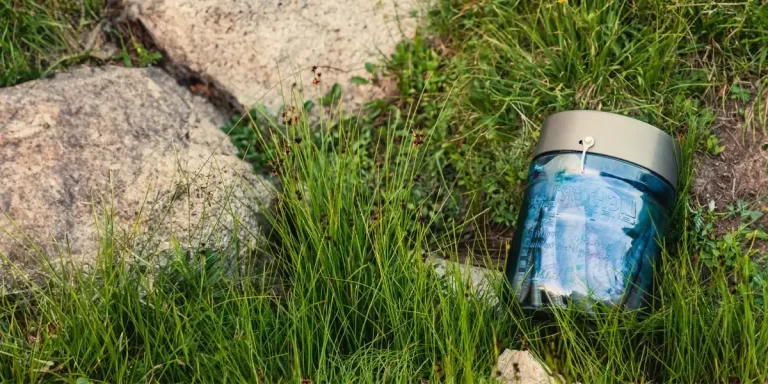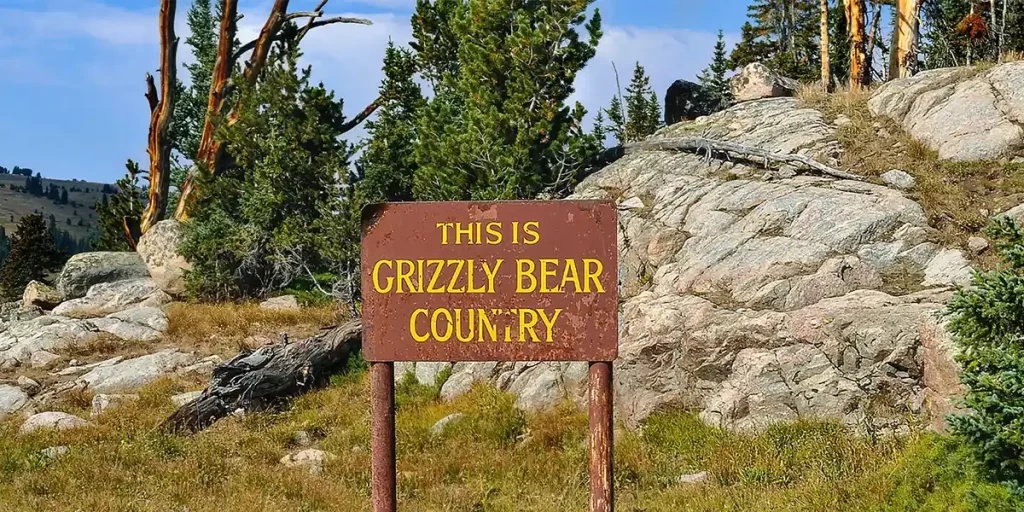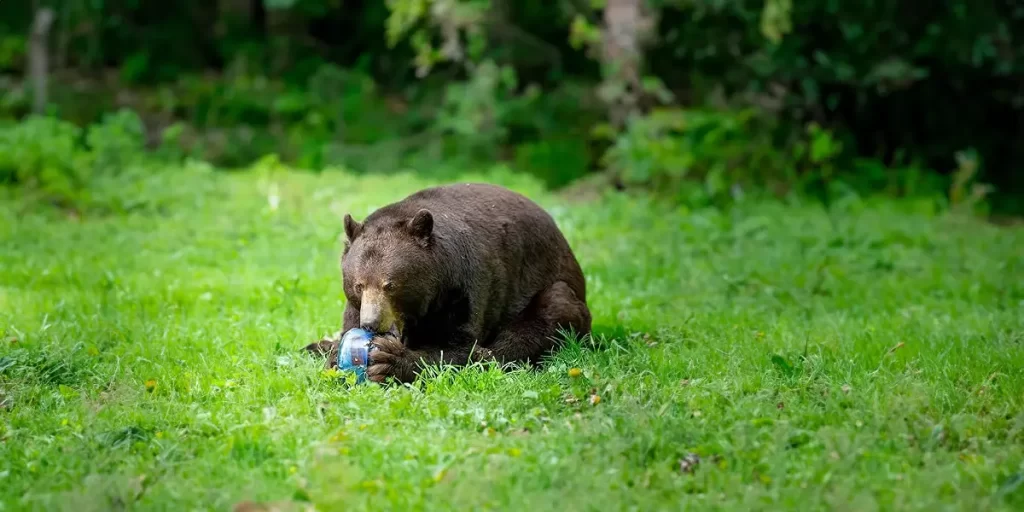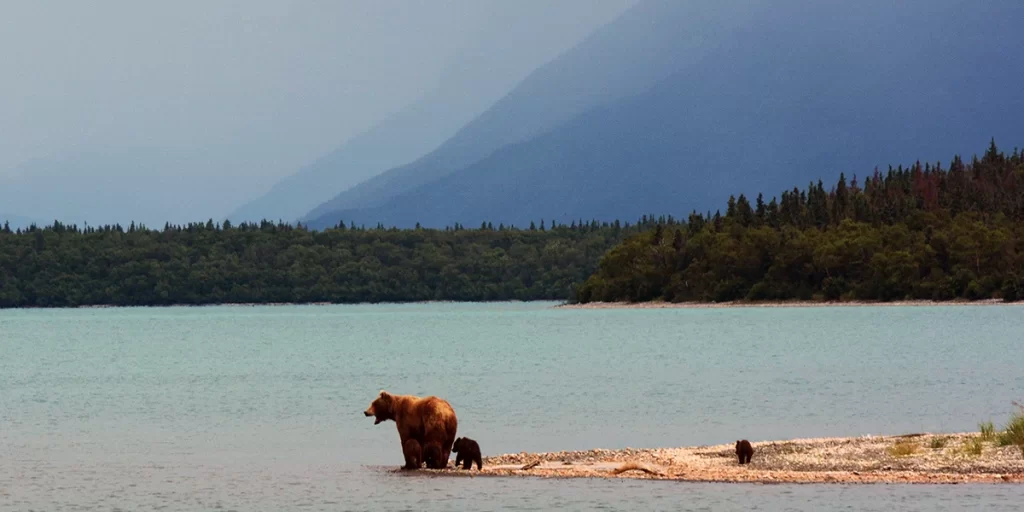

Imagine you’re deep in the wilderness, surrounded by nature’s beauty. But beware, bears are nearby, and proper food handling is essential.
Enter bear canisters, simple yet vital tools for keeping you and these majestic creatures safe.
In this post, we’ll delve into the significance of bear canisters, what they are, and how to use them effectively.
Interested? Let’s get started.
Bears are super-smellers; their noses can detect food from miles away. They’re also naturally curious creatures. This curiosity and powerful sense of smell can lead them to your campsite in search of a meal or out of sheer curiosity.
It’s worth mentioning that in North America, bears are most active in September and October. During this time, they prepare for the upcoming winter by eating and drinking almost nonstop.
Understanding this behavior is crucial because it explains why bear canisters are so important. In the past, people used to sleep near their food, but this put both campers and bears at risk.
So, bear canisters are our way of keeping everyone safe in the wilderness. In the next sections, we’ll dig into how these canisters work and why they’re a must for your outdoor adventures.

What are bear canisters? Bear canisters are specialized containers designed to keep your food and scented items safe when you’re camping or backpacking in bear territory.
Unlike regular containers, these are built tough to resist curious bears and other wildlife. Made from sturdy materials like plastic, carbon fiber, or aluminum, they come with a lock to keep animals out.
Why are they so important? They’re all about safety—for both you and the bears. Bear canisters prevent bears from getting a taste of human food, which can lead to dangerous situations.

Bear canisters come in two main types, each with its own advantages:
Hard-Sided Canisters: These are the most common and robust bear canisters, typically made of durable materials like hard plastic or metal. However, they can be quite heavy for extended trips, weighing approximately 2 lbs (about 900g) for the most popular models.
Soft-Sided Canisters (Bear Bags): While they may not be real canisters, soft-sided options like bear bags are popular due to their lightweight design, usually weighing about 8 ounces (around 215g). Made from sturdy materials like nylon, they’re easy to pack. However, they offer less bear protection and require proper hanging techniques (refer to the FAQ at the end of this post to learn how).
Our verdict: If you prioritize strong protection and can handle the weight, go for hard-sided canisters. For shorter trips or areas where bear canisters aren’t mandatory, consider the lightweight option of soft-sided bear bags.
When choosing a bear canister, consider these key factors:
When picking a bear canister, capacity and weight are crucial factors to consider. Let’s explore why they’re important:
Capacity: When choosing the right size, think about how long your trip will be and the size of your group. A smaller canister (for example, 1.9 gallons or 7.2 liters) is great for a solo weekend hike. However, for longer journeys (like 7 days), you’ll need more space, around 3 gallons or 11.5 liters.
Weight: The canister’s weight affects your backpack load. Lighter canisters are ideal for longer trips, lessening the strain on your back. But remember to balance weight with capacity. Your pre-trip planning helps you choose the lightest option between resupply points.
When journeying into bear territory, certification for your bear canister is vital, especially in national parks and wilderness areas. Here’s why it’s crucial:

To safeguard your food and scented items from wildlife, follow these key bear canister usage guidelines:
In the wilderness, amidst nature’s beauty, bears are close by, making proper food handling crucial. Bear canisters are your essential tools for safety, protecting both you and these majestic creatures.
In this guide, we’ve explored the importance of bear canisters and how to use them for your outdoor adventures. If you want to delve deeper into hiking, camping, and navigating bear country, you can find additional information in our related post here.
So, go out there, enjoy the great outdoors, and stay safe.
To hang a bear bag properly, follow these steps for wildlife safety. First, find a sturdy tree with a branch at least 15 feet above the ground and 4-6 feet from the trunk. Next, use a strong cord to tie your food bag with a secure knot. Throw the cord over the branch and hoist the bag up, keeping it at least 10 feet below the branch. Finally, tie off the cord, ensuring the bag is suspended and away from the tree trunk. This technique helps protect your supplies from bears and other wildlife when camping in bear country. Always check local guidelines for specific hanging requirements.
Bear canisters are built to last for many years if well-maintained. The lifespan can vary depending on factors like usage, materials, and exposure to the elements. Typically, hard-sided bear canisters made of durable materials such as plastic, carbon fiber, or aluminum can last for a decade or more with proper care. Soft-sided bear bags may have a shorter lifespan due to wear and tear but can still provide several years of reliable use. Regularly inspect your bear canister for any signs of damage, like cracks or weakened seals, and follow the manufacturer’s guidelines for maintenance.